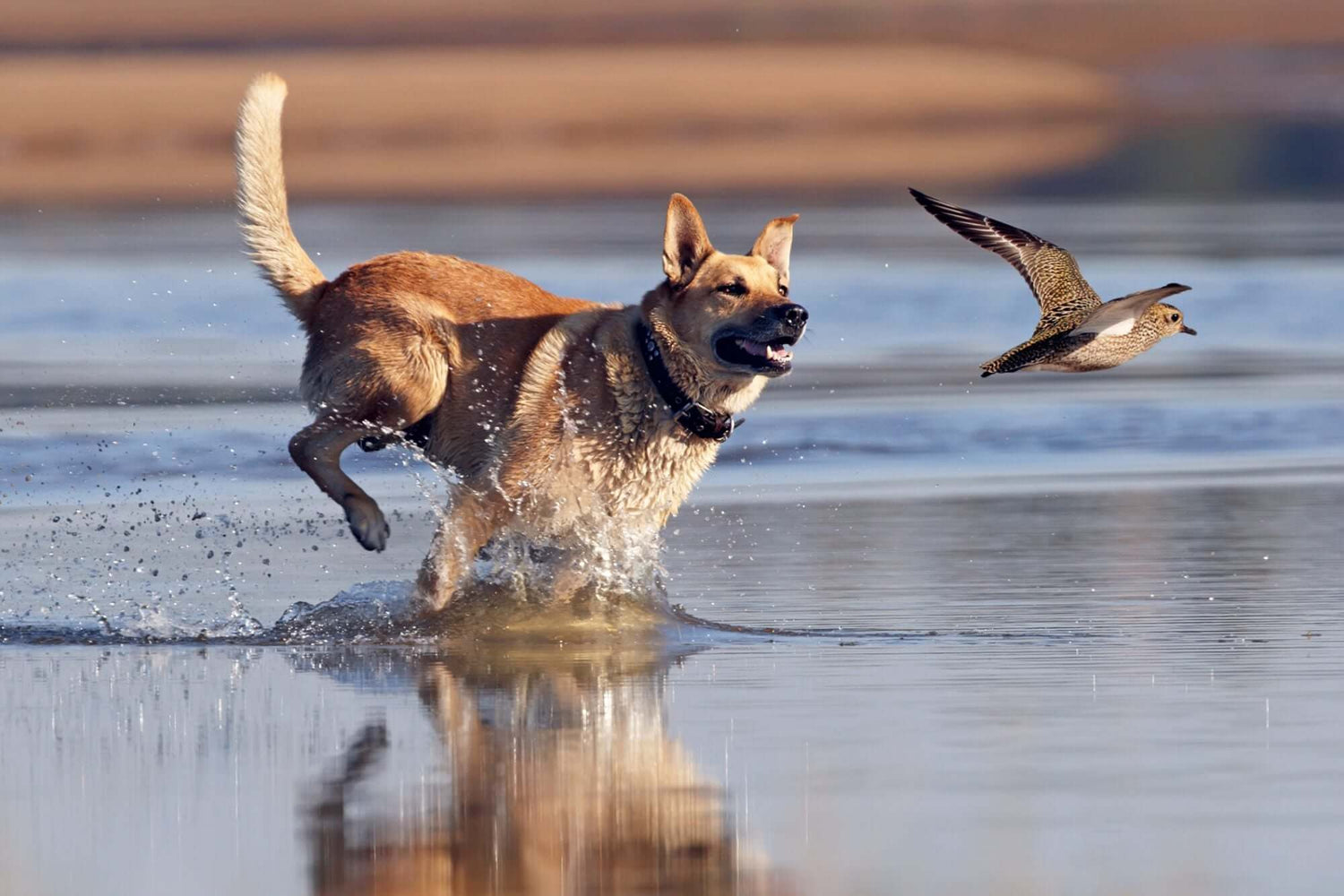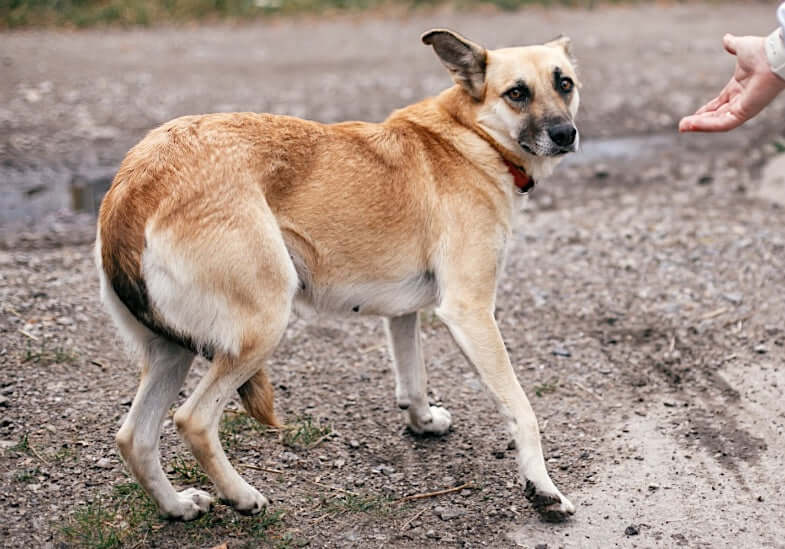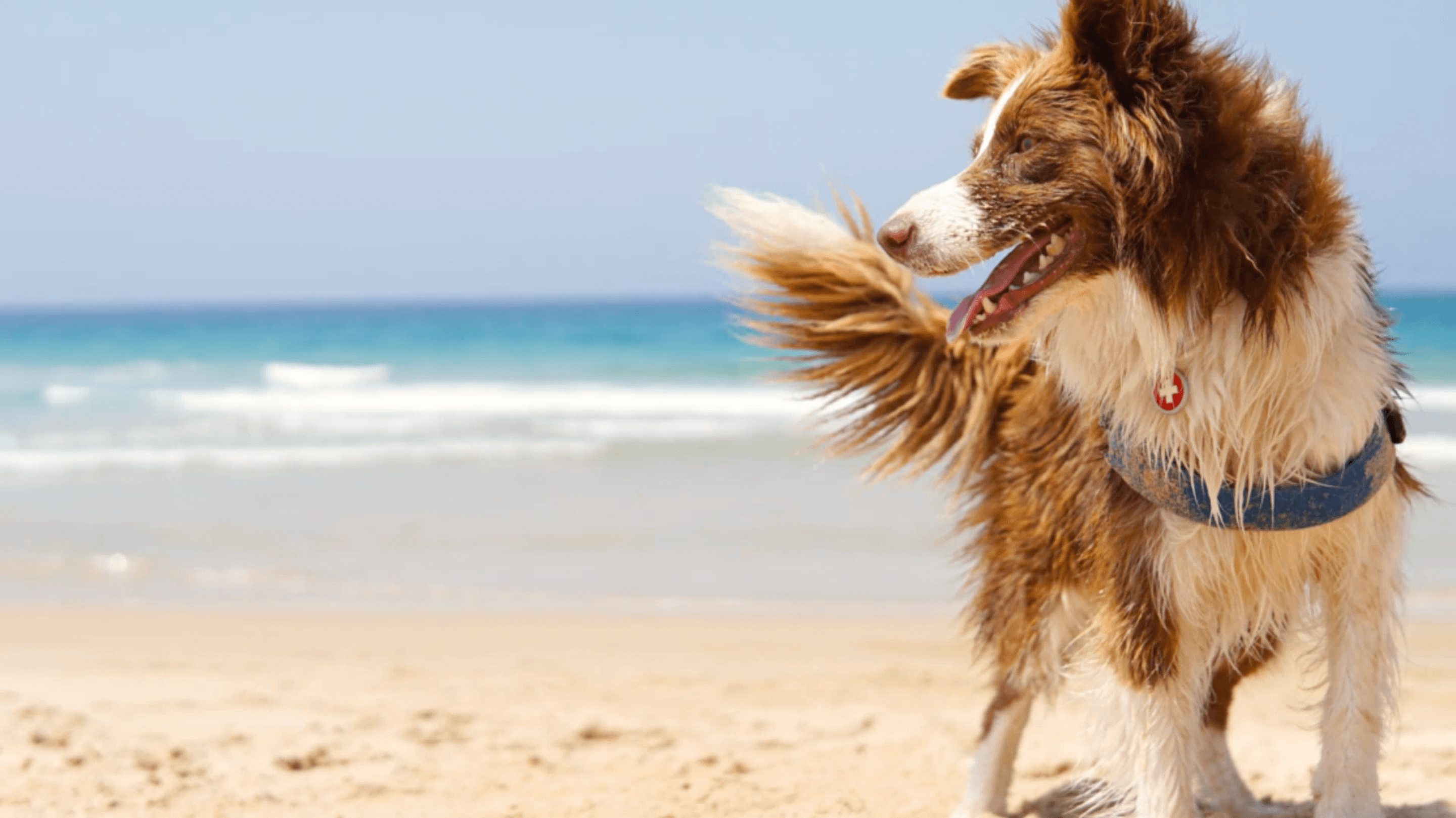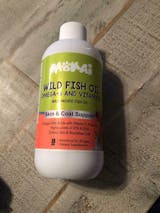Do dogs have prey drive? Is this even the right term to use? How do I know if my dog has a high or low prey drive? Should I do anything about it? These are some of the things many pet parents wonder about when they see their dog fiercely chase every squirrel they come across.
The conversation about prey drive in dogs has been rising, and so has the discussion about it within professionals. Veterinarians and animal behaviorists can’t seem to agree on whether “prey drive” is the right term to use, on what it refers to and on which signs this personality trait has.
Today we’ll go through all of these points so you can determine where your dog fits in the ‘prey drive’ scale and whether you should do something about it or not.
What is prey drive in dogs?
The term prey drive in dogs is typically used to refer to pups who hunt, chase and/or capture different prey animals such as birds, cats, squirrels and rabbits. This behavior can also include catching and killing preys.
The issue revolving around this term arises because of how much is included in the term “prey drive in dogs”. If a dog likes to chase others but not capture them, do they have prey drive? If a dog loves to chase a ball, do they have prey drive? The limits of the chase and the characteristics of the prey are two of the main points of discussion about this dog personality trait.
The other discussion point is about the word “drive”, since it is most commonly used to describe the desire or motivation to do something. What is more, ethology (the scientific study of animal behavior) defines drive as “the internal states of arousal, e.g. hunger and thirst, which the organism attempts at reducing”.
Despite the discussion around the two words that form the term of “prey drive”, the majority of blogs, forums, veterinarians and specialists agree that it can be used to describe when dogs have the habit of chasing and hunting living preys, such as squirrels, cats, birds, rats and rabbits.
The extent of which the chase gets to, does not determine whether the dog has a prey drive or not. They can chase them until they get them and release them, capture them and kill them, or just hunt them without touching them at any moment.
And that is the definition we’ll use in this article. Now, let’s go through the signs to look for in your dog to determine if they have a high or low prey drive.
Signs of prey drive in dogs
If you’re reading this article, you probably are a pet parent who has experienced this behavior. You are used to your dog chasing birds around the park or squirrels down the street. But if you are not 100% sure if this behavior can be categorized as “prey drive”, keep reading.
- Being fixed on a prey
- Doing a slow walk towards the prey
- Chasing it if they start to run
- Capturing the prey and biting/killing it
Your pup does not need to do all of these steps, as said before, your dog can be content with just chasing a squirrel for hours without the need of grabbing it.

Dog breeds with high prey drive
There are some dog breeds that have an enhanced and more powerful prey drive instinct than others:
- Terriers
- Hounds
- Border Collie
- Australian Shepherd
- Beagle
- Bracco
- Dogo Argentino
- German Shepherd
- Greyhound
- Akita
- Weimaraner
Dog breeds with low prey drive
As there are dogs with high prey drive, there are also breeds that are known for having a quite low prey drive, such as:
- Hovawart
- Poddle
- Maltese
- Labrador Retriever
- Golden Retriever
- French Bulldog
- Boxer
How to manage prey drive in dogs
Although prey drive itself isn’t a problem, it can be if it escalates significantly. If you and your pooch can’t enjoy going to the park because they won’t stop chasing every living animal, if they tend to chase and kill the ducks in your backyard, or if they are constantly pulling on their leash because they want to hunt a bird, it has become a problem.
But don’t worry, because there are some tips you can follow to help your dog manage their high prey drive.
1. Healthy outlet for their instincts
If your dog has a high prey drive, they will want to satisfy their desires and their instincts in some way. Instead of doing it by chasing squirrels in the park, you can help your pooch find a healthier outlet, such as long sessions of playing fetch with their favorite ball. Using a frisbee is another great outlet for your pup, they will love running after it and then catching it in the air.
2. Redirect your dog’s attention
This technique is meant to be used in the moment of action. When you catch your dog staring at a prey or even when you see an animal your pup would consider a prey, you can redirect their attention to another thing, such as a stick, a toy or a treat.
The worst thing you can do is start yelling and running towards your dog, this will have no positive results and can make them chase the prey more intensely. Redirecting their attention is one of the best things you can do.
3. Positive reinforcement
Similar to the previous one, this technique consists of rewarding your pup when they don’t go chasing after a prey. If they respond to the object you are trying to redirect their attention to, give them a healthy treat afterwards. This way, they will understand that if they don’t hunt preys, they are doing something right and, eventually, get a treat.
4. Enrichment activities
Dogs use their smelling sense as a tool for their hunts. Stimulating that sense is a great way of satisfying their prey drive. There are many easy DIY enrichment activities for dogs that make pups work this sense, you can find them here.
5. Satisfy their physical needs
Doing constant physical activity is another great way of satisfying your dog’s prey drive. Although it can be tough to take your dog to the park because of their high prey drive, you can still enjoy other activities, or a park suitable for them. Dogs need to explore, run and play to stay healthy and satisfy their needs. Having walks with leash is not enough for your dog and will not improve their prey drive instincts.
















